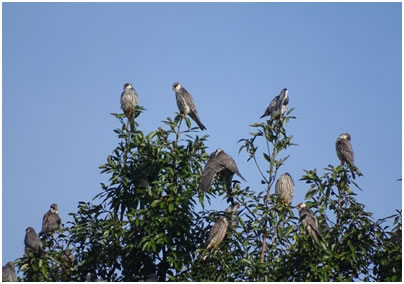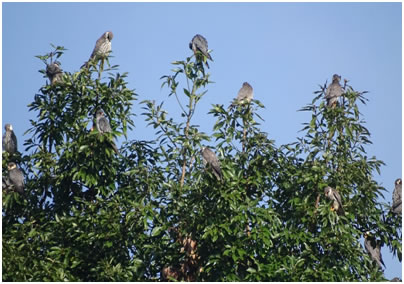- Skip to main content
- Screen Access Reader
- Text Size



- Contrast Options


- Character Spacing

Wildlife of Meghalaya
Meghalaya is a part of Indo-Burma biodiversity hot spot and identified as key area for biodiversity conservation due to high species diversity and high level of endemism. It has attracted the attention of wildlife enthusiasts and research scholars from all over the country. The rare and highly endangered Clouded Leopard is the State Animal. Other carnivores found here are Leopard, Leopard cat, Jungle cat, Golden Cat, Marbled Cat, Dhole or Indian Wild Dog and Indian Wolf.
Herbivores commonly found are Elephant, Gaur, Sambar, Serow and Barking deer. Omnivores comprise of Jackals, Common fox, Sloth Bear, Himalayan Black Bear, Large Indian civets, Yellow throated Marten, Mongoose, Hog Badger etc. Among the primates, Hoolock Gibbon, the only Ape found in India and Capped Langur both globally endangered species are also found in the State.Other primates found in the State are Slow Loris, Pig Tailed Macaque, Stump Tailed Macaque and Rhesus Macaque.
Reptiles such as the Bengal Monitor Lizard, Water Monitor Lizard and various snakes like the King Cobra, Indian Cobra, Indian Rock Python, Banded Krait, Vipers, Keelbacks, Vine snakes, Trinket snakes, Wolf snakes, Rat snakes, flying snakes are found in the State.
The State has a rich bird diversity. Right from extremely rare Rufous Necked Hornbill, the Darter, Dordon's or Blyth's Baza Painted Stork, Lesser or Himalayan Grey headed Fish Eagle, Black or King Vulture, Long Billed Vulture, White-backed Vulture, White-legged Falconet, White-cheeked Hill Partridge, Wood Srupe, Tawny Fish Owl, Blyth's Kingfisher, SprangledDrongo, and Grey Sibia are found in the state. Species recorded for the first time in Meghalaya during 1996-1998 survey are: the Great Crested Grebe, Black Necked Grebe, Red Necked Grebe, Indian Shag, Little Green Heron, Malay Bittern, Greater Adjutant Stork and Black Headed Gull. The Forest wagtail was recorded for the second time and that too after a century, the first time was by Hume 1888. More than 400 bird species are recorded from Nongkhyllem Wildlife Sanctuary.
There is also a notable recordof Galiforms found in the State like the Khasi Hills Partridge, Khaleej pheasant, Jungle fowl and the most elusive Peacock pheasant.
Every year migratory flocks of Teals, Pintails, and Cormorant (great cormorant) visit the State. The streams and rivers also support a considerable amount of wildlife. The Golden Mahseer, which has disappeared from other rivers and streams due to excessive fishing, silting of riverbeds and pollution of water can still be found in the river Umtrew. The rare Khasi Hills Terrapin and the Asian Brown Tortoise are also recorded.
Amur Falcon roosting
Amur Falcon is a small raptor of falcon family. Amur falcons breed in South-eastern Siberia and Northern China and migrate west through India and across Arabian Sea to Southern Africa to spend their winter making a round trip of at least 20,000 km every year travelling between their breeding and wintering ground. They make a stop at Tyrso village in Ri Bhoi district which is about 75 km from Shillong during the month of October for roosting. They usually stay here for a month or so before resuming their annual migration. The Department with the help of Tyrso Valley Wildlife Protection Society an NGO involved in the protection of Amur falcon are sensitizing people through awareness campaigns. A unique Amur Falcon festival is organized by the NGO during November to give space for the birds and to create awareness.

